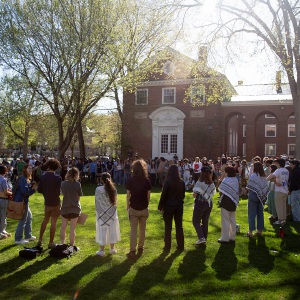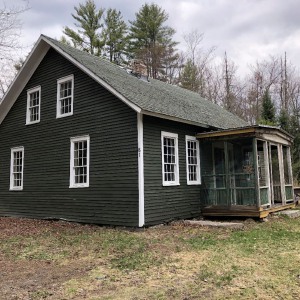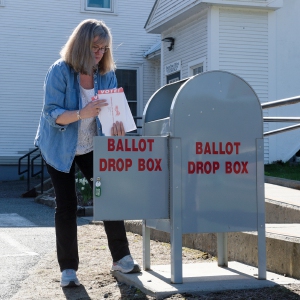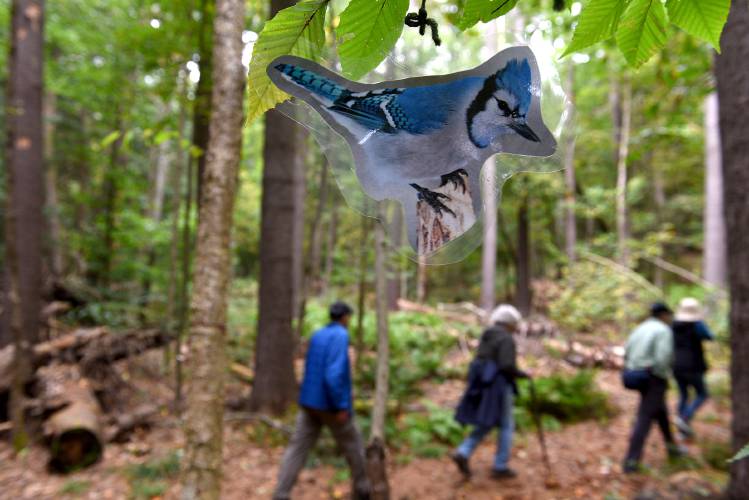Woodstock festival focuses on forest stewardship
| Published: 09-18-2023 12:04 AM |
Logging and ecology and wood-based arts and crafts were all on display over the weekend during the annual Forest Festival at the Marsh-Billings-Rockafeller National Historical Park.
“We’re celebrating all things wood and forestry,” said Rainey McKenna, 46, program manager at the historic site.
The national park is “set aside to tell the story of conservation and stewardship in America,” McKenna said.
The festival aims to foster an understanding of “the process of where our wood comes from, how we produce it, how we use it, and how we preserve the ecosystems,” McKenna said.
The event also included “Abenaki representatives talking about the cultural connection to the forest — in particular the ash tree,” which faces extinction in the face of the emerald ash borer, McKenna said.
One woodworker, George Ainley, of Perkinsville, said his chairs were “reproduction colonial design” with a penchant for durability — either made from white oak or ash wood. The intersection of perspectives on forest contents was central to the festival.
The Slow Cookers, a Burlington-based folk-country band, serenaded the attendees with the pleasant tunes of their acoustic and tenor guitars, mandolin and upright bass.
Richard Holschuh, of Brattleboro, Vt., led “Alosada Kpiwi: An Abenaki Perspective with Place,” a guided hike along the park’s trails, describing the cultural significance of the Abenaki people’s connection to the land. Holschuh, 64, serves as the chairman of the Vermont Commission for Native American Affairs and as a representative for the Elnu Abenaki Tribe. “I am here to help restore relationships and bring connection back [between native people, immigrants, and the land],” Holschuh said.
Article continues after...
Yesterday's Most Read Articles
 Dartmouth administration faces fierce criticism over protest arrests
Dartmouth administration faces fierce criticism over protest arrests
 Hanover house added to New Hampshire Register of Historic Places
Hanover house added to New Hampshire Register of Historic Places
 Sharon voters turn back proposal to renovate school
Sharon voters turn back proposal to renovate school
Holschuh explained an Abenaki perspective on the ash tree: “It’s referred to as the ‘snowshoe tree’ as they used to make their snowshoes with it because the wood bends so well.”
The danger of the ash tree intersects Abenaki culture because “their origin story is tied in with the Ash tree,” McKenna said.
Additionally, wood management and forest ecology are affected by the tree’s possible extinction; the intersection of stewardship across cultures, time, and perspectives is the driving purpose of the festival, McKenna said.
Another guided hike was the “Forest Past, Present, and Future: History Through the Trees,” which showed the environmental history and the impact of human activity on forests over time.
On a pasture behind the mansion, Vera Longtoe Sheehan displayed her “traditional knotting” with baskets, skirts, and bowls made of twine processed from milkweed and stinging nettles. Sheehan is the artist-in-residence for the National Park.
As attendees explored the festival, they discovered Native American woodcrafts, tools, and art. Among these were toboggans, moose-antler combs, baskets, bowls, axes, and more.
There were horse-drawn carriage rides led by massive “Percheron workhorses,” Holschuh identified.
The carriages also connected visitors with the history of logging, as the logs would be drawn similarly by horses, McKenna explained.
Standing on a carriage trail under the tree canopy, McKenna said, “It’s a really fun day to celebrate the history of forestry and land stewardship.”




 Plan on track to ship Upper Valley mail to Connecticut for sorting
Plan on track to ship Upper Valley mail to Connecticut for sorting West Lebanon crash
West Lebanon crash Over Easy: On bread, buttered popcorn and big sandwiches
Over Easy: On bread, buttered popcorn and big sandwiches
